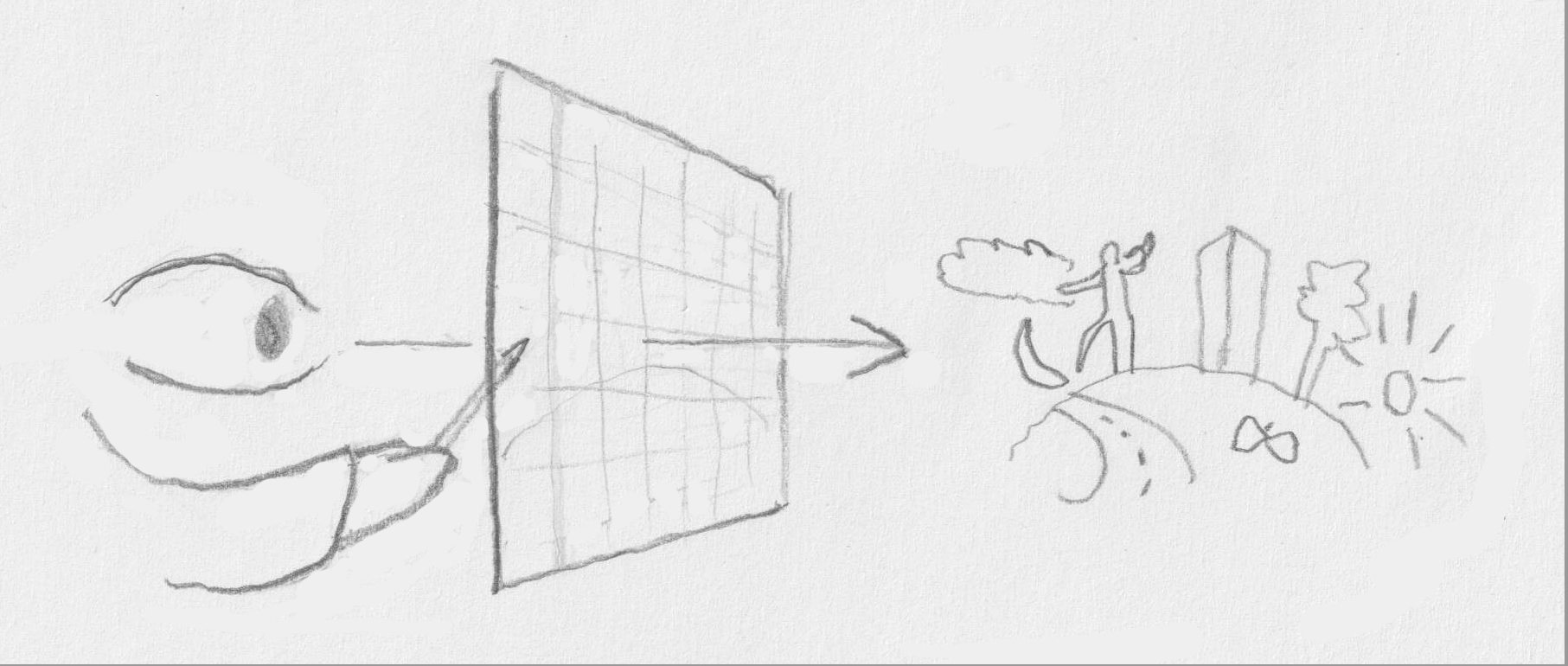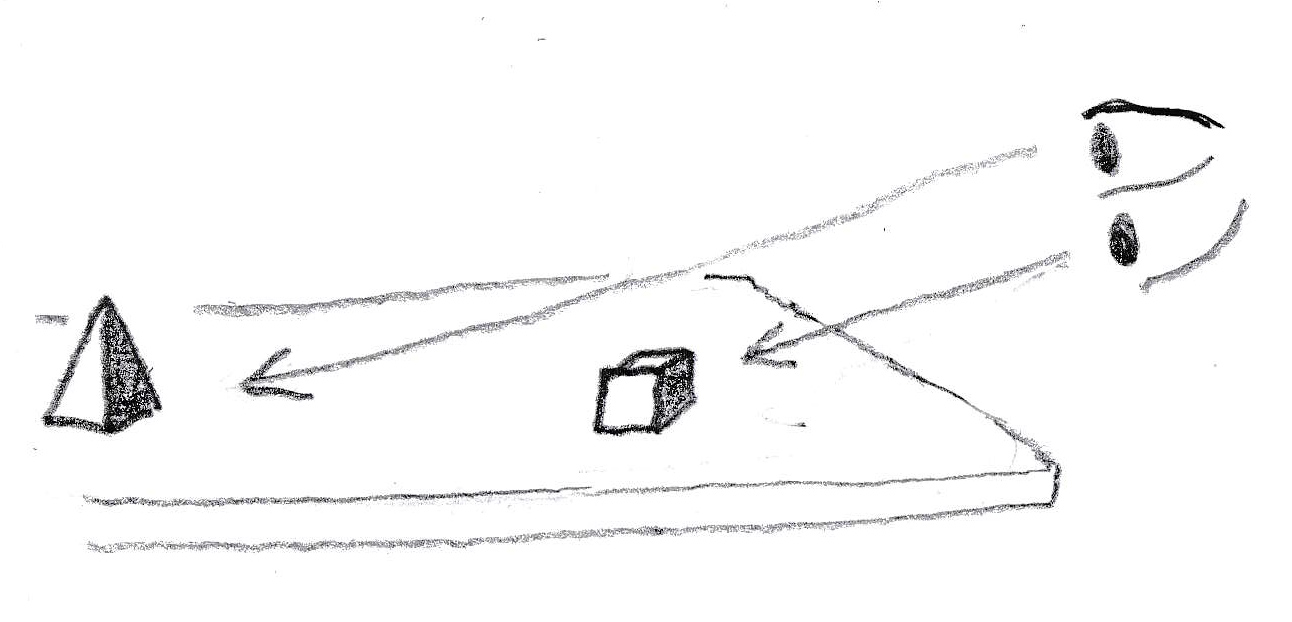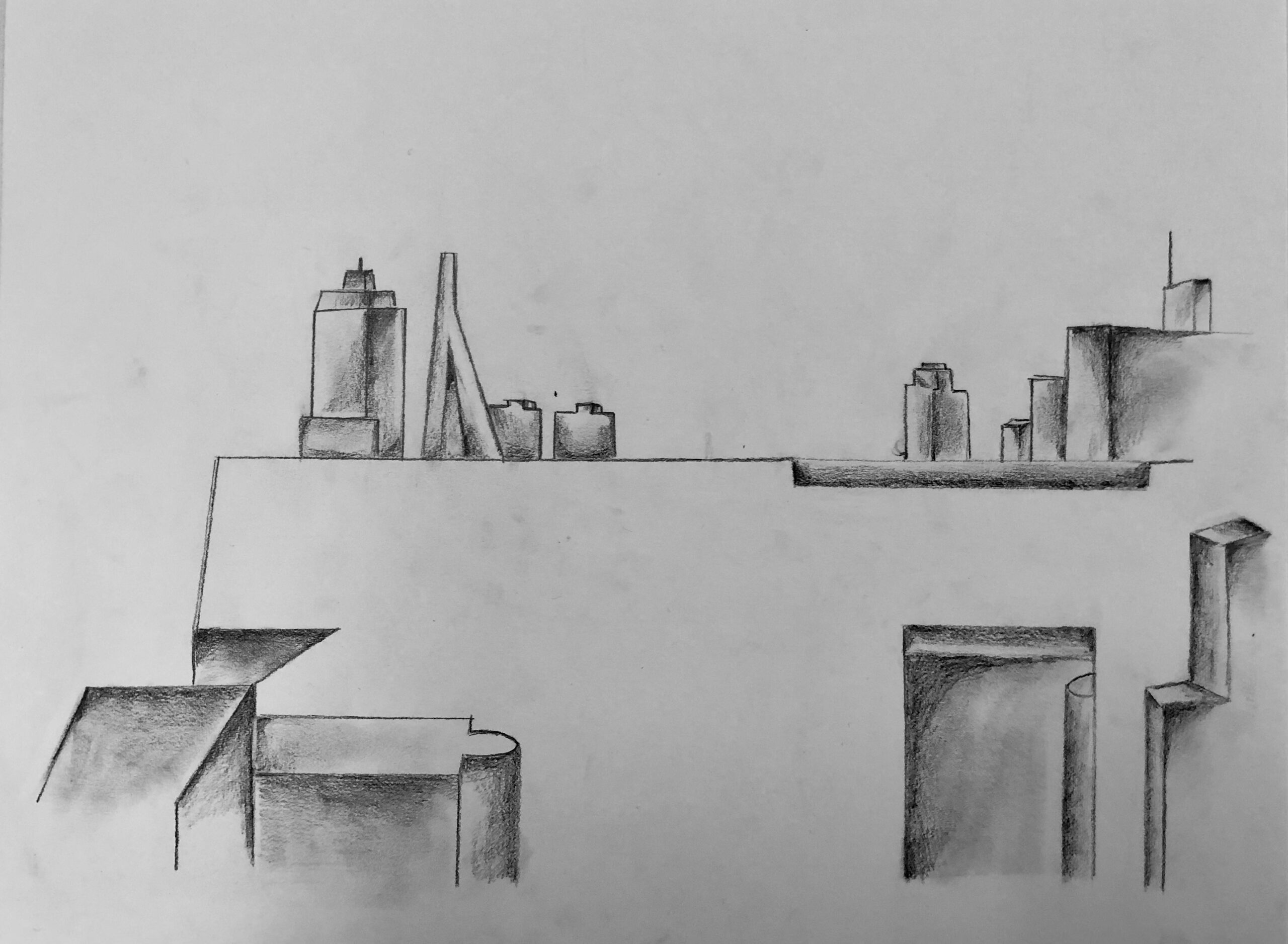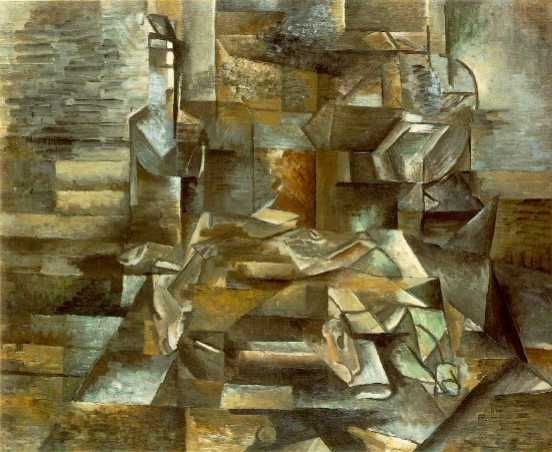Chapter 7 | IS IT ACTUALLY TRUE?
Since the 15th century, linear perspective has been used to depict spaces with figures as realistically as possible, but it only works when you look at a real or imagined view with one eye from a fixed vantage point, just like through the lens of a camera. The drawing paper is like a pane of glass or window between you and the world.

However, this does not entirely correspond with the way we normally see the world around us. Firstly, we do not view our environment with one eye from a fixed position, but with two eyes. Secondly, our eyes and head usually move a little without us being aware of it.

Thirdly, we first focus on one thing in our environment and then on another, close by or further away. We do this unnoticed in fractions of a second. With each focus, our perspective shifts a little and we refocus our eye lenses. Our brains create a total image from these different moments in time.

Experience this yourself with the following experiment:
Exercise 1: attach a transparent A4 sheet of paper to a window and, with both eyes open, draw what you see outside, preferably tighter shapes such as buildings. If possible, use a waterproof fineliner. You will notice that lines are constantly shifting as your focus changes slightly. It will not be a neatly correct line perspective drawing. Your drawing can also be quite messy.
Exercise 2: Trace your drawing onto plain paper using a light box (or against a window on a sunny day). You can always edit your drawing further during or after tracing. This experiment can lead to surprising designs.


To draw a more realistic picture of how we see our environment, you would actually have to combine those different moments/perspectives/views into one image. That’s what the Cubists tried in the early 20th century. These experiments can seem confusing and do not look realistic.
